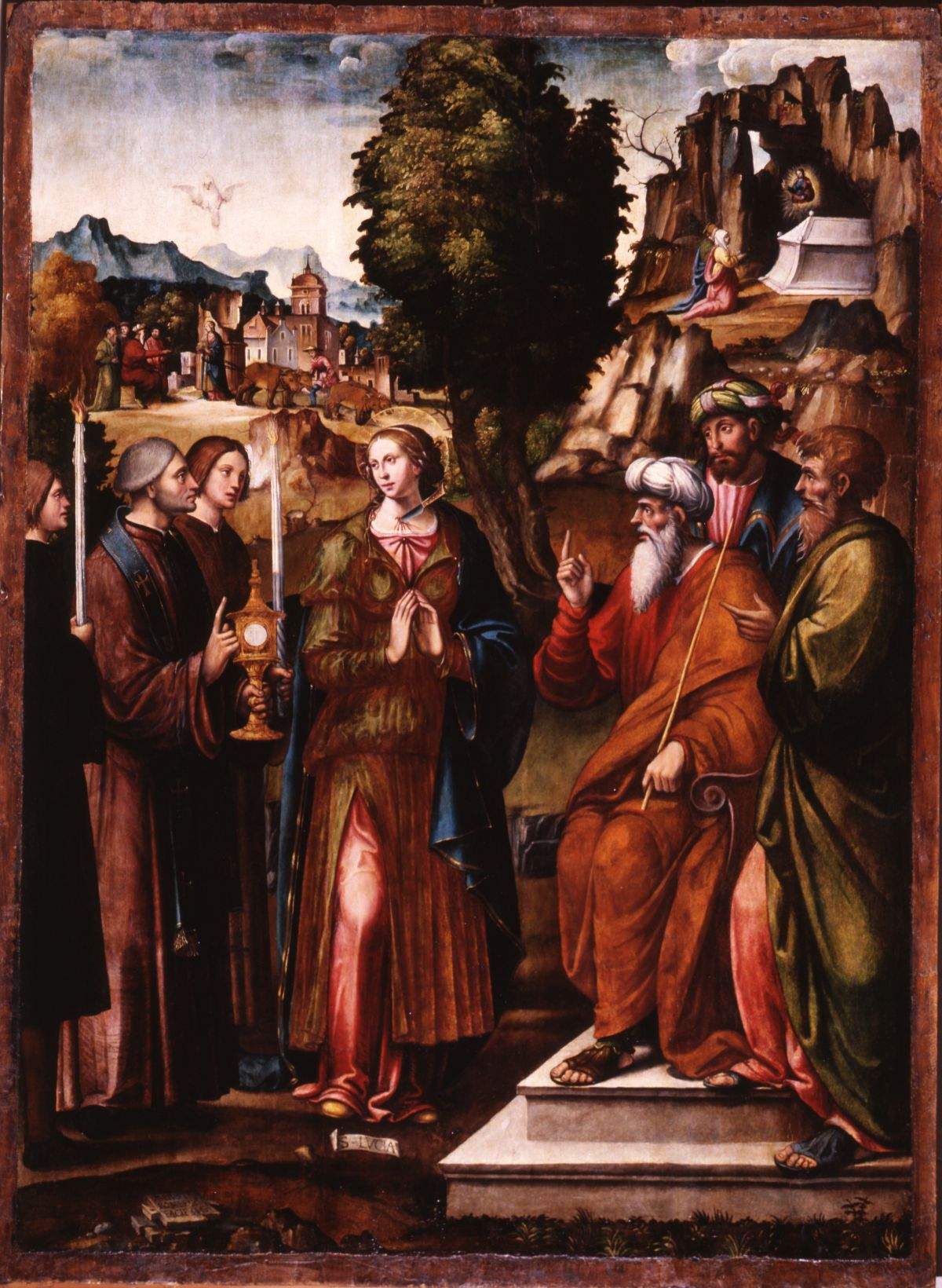Entitled Renaissance in Liguria, the exhibition that runs from December 17, 2019, to May 10, 2020, at the Galleria Nazionale di Palazzo Spinola in Genoa: the Genoese show exposes to the public a nucleus of works created in the region between the second half of the 15th century and the beginning of the 16th century by important exponents of local art, namely Giovanni Mazone (Alessandria, 1433 - Genoa, 1511), Nicolò Corso (Niccolò di Lombarduccio; ?, 1446 - Genoa, 1513), Carlo Braccesco (news from 1478 to 1501), Ludovico Brea (Nice, c. 1450 - c. 1523) and Agostino Bombelli (Valenza Po, 1510 - 1545). The aim is to exhibit three works acquired in recent years by the Ministry of Culture and Tourism for the benefit of the collections of the National Gallery of Liguria at Palazzo Spinola: these are Mazone’s Visitation with a Holy Bishop (St. Erasmus?) and Circumcision (two predella fragments, parts of a dismembered altarpiece probably dedicated to the Virgin), and a Martyrdom of St. Lucy by Bombelli.
Mazone’s two paintings must have enriched a polyptych that bore either a Madonna and Child Enthroned or anAnnunciation at its center, as in the case of the Majesty preserved at the Genoese church of Santa Maria di Castello, made by the artist before 1469. Both scenes painted in the two fragments are set in a hilly landscape characterized by paths leading to towns and mountains in the distance. Bombelli’s painting, on the other hand, can be dated to about 1535, is signed (“AVGVST(INUS) BOMBELL(U)S FACIEBAT”) and is a pictorial text of very considerable value even in view of the paucity of figurative evidence that is certainly autograph: the Valencian painter’s catalog counts, in fact, less than a dozen works, and therefore the panel in the Genoese museum qualifies as a fundamental fixed point for fully understanding its compositional and pictorial qualities. The narrative of the martyrdom follows the Legenda Aurea of Jacopo da Varazze: the future saint, placed in the center of the scene, turns her gaze to the priest who, accompanied by two young men, carries the body of Christ. On the other side we observe the magistrate Pascasius, mandator of the torture, seated on a throne, while the background is enlivened by two episodes from the life of the saint. The altarpiece, made for the oratory of Santa Lucia, originally located near the destroyed Genoese convent of San Domenico, had several passages in private collections until 2017, when the Ministry acquired it for the National Gallery of Liguria.
Alongside these testimonies, several paintings of great importance to the Ligurian Renaissance will be placed: Carlo Braccesco’s panels depicting St. Peter and St. Paul, granted on deposit in 2016 by a private collection (originally side compartments of a polyptych dedicated to St. Andrew paid for in 1495 by the community of Levanto), Nicolò Corso’s Polyptych of St. Vincent Ferrer (a work from 1501, deposited at the Ligurian Gallery since 1986), and the magnificent Ascension painted by Ludovico Brea in 1483 and acquired by the Ministry in 2010.
The exhibition is intended to constitute a short in-depth journey that, also visually, will accompany the public in the rediscovery of some of the most important painters who worked in the Genoese area between the second half of the 15th century and the beginning of the next. In support of this initiative, a volume has been published by Sagep Editori and edited by Gianluca Zanelli, director of the National Gallery of Liguria at Palazzo Spinola, with contributions by Marco Casamurata and Gianluca Zanelli, which aims to open a reflection on a period that is scarcely documented in the Pellicceria residence, and to give an account of a particularly lively and profitable moment that saw Genoa at the center of a network of commissions and present “forests” of absolute first order.
For information you can visit the website of the National Gallery of Palazzo Spinola.
Pictured: the Martyrdom of Saint Lucy by Agostino Bombelli
 |
| The protagonists of the Renaissance in Liguria are on display in Genoa, at Palazzo Spinola |
Warning: the translation into English of the original Italian article was created using automatic tools. We undertake to review all articles, but we do not guarantee the total absence of inaccuracies in the translation due to the program. You can find the original by clicking on the ITA button. If you find any mistake,please contact us.